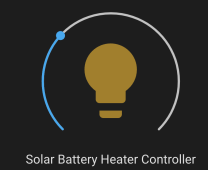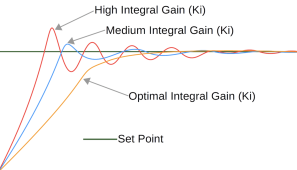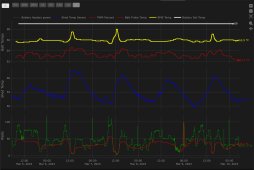Jazzmonger
Hacker at heart
Some of us live in very cold climates and LifePO4 batteries don't do well below freezing. In fact, you can destroy your batteries by charging them when they're near 0 C. We have too much $ invested in our packs to not take good care of them.
I bought these heaters and they work great:

 diysolarforum.com
diysolarforum.com
There are 4 of them producing a total of 45wx4= 180 watts at full power. 180/120=1.5 Amps
Now Im writing a control system that lets me fine tune the stable battery temp. I currently have an automation controlling them but there are a couple problems with this approach.
1) if home assistant server goes down, all bets are off
2) the heaters are either on or off, no in between.

you can see the temps go from freezing to optimal, but the peak and valley are when home assistant crashed or unavailable and is unable to control the on/off switch.
To solve this, I ordered a smart controllable dimmer:

These dimmers don't work well for LEDS, but for controlling resistive loads like pad heaters should work fine.
The best way to control them is with an ESP. My go to for simple projects is a D1 Mini ESP8266.

The ESPHome code Im starting with is:
This works great and I have a halogen light hooked to the outlet and it dims nicely.

Adding a PID controller to the heater will complete this.
"PID controllers are good at modulating an output signal to get a sensor reading to a specified setpoint. For example, it can be used to modulate the power of a heating unit to get the temperature to a user-specified setpoint."
The PID controller component in ESPHome is a very complete implementation and even includes an auto tune feature!

This should take my temp graph and turn it into something like this over time, ultimately creating a completely stable, single temperature to maintain the batteries at using the least energy to do so.

all the pieces are in place, now I just need to finish the code.
I find it amazing that all this stuff is available and easy to implement. I'll be posting this full project on my Github once Im done.

 github.com
github.com
More soon!
I bought these heaters and they work great:

LifePO4 120v battery heater mats - work well!
These seem to work really well: https://www.amazon.com/dp/B08TM6SSP7?psc=1&ref=ppx_yo2ov_dt_b_product_details they almost cover the entire bottom of each rack mount battery. I got them and set up an automation in Home Assistant on 12/22 to keep them between 50-60F. This is timely bc it's...
There are 4 of them producing a total of 45wx4= 180 watts at full power. 180/120=1.5 Amps
Now Im writing a control system that lets me fine tune the stable battery temp. I currently have an automation controlling them but there are a couple problems with this approach.
1) if home assistant server goes down, all bets are off
2) the heaters are either on or off, no in between.
you can see the temps go from freezing to optimal, but the peak and valley are when home assistant crashed or unavailable and is unable to control the on/off switch.
To solve this, I ordered a smart controllable dimmer:

These dimmers don't work well for LEDS, but for controlling resistive loads like pad heaters should work fine.
The best way to control them is with an ESP. My go to for simple projects is a D1 Mini ESP8266.

The ESPHome code Im starting with is:
Code:
- platform: ac_dimmer
id: dimmer1
gate_pin: GPIO13
zero_cross_pin:
number: GPIO12
mode:
input: true
inverted: yes
light:
- platform: monochromatic
output: dimmer1
name: Solar Battery Heater ControllerThis works great and I have a halogen light hooked to the outlet and it dims nicely.

Adding a PID controller to the heater will complete this.
"PID controllers are good at modulating an output signal to get a sensor reading to a specified setpoint. For example, it can be used to modulate the power of a heating unit to get the temperature to a user-specified setpoint."
The PID controller component in ESPHome is a very complete implementation and even includes an auto tune feature!

This should take my temp graph and turn it into something like this over time, ultimately creating a completely stable, single temperature to maintain the batteries at using the least energy to do so.

all the pieces are in place, now I just need to finish the code.
I find it amazing that all this stuff is available and easy to implement. I'll be posting this full project on my Github once Im done.
jazzmonger - Repositories
Retired electronics engineer and hack programmer. I worked for Netscape in the very beginning before Al Gore created the internet, and now look where we are. - jazzmonger
More soon!
Last edited:




